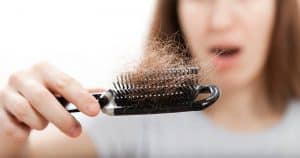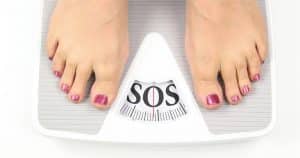For a large proportion of women, “that time of the month” tends to be a mere inconvenience that is easily managed with the help of a few painkillers, a bar of favourite chocolate and some comforting trash TV. However, for the one in ten of us who suffer from PCOS[1], the situation is very different and requires a different approach.
Alongside excess androgen and enlarged and fluid-filled ovaries, one of the main symptoms of this disorder is irregular and painful periods. This means that many sufferers will experience higher levels of pain that often leaves them incapacitated and unable to work, play or go about their normal day-to-day routine. In this instance, the typical classic period remedies do not quite cut it. As you wince with yet another agonizing cramp, you are left wondering: well, what can I do to manage the period pain that comes with PCOS?
Heat therapy, regular exercise, anti-inflammatory pain medication, supplements such as Vitamin E and Magnesium are just some of the ways to manage period pain when you have PCOS. Following a good PCOS diet that focuses on whole foods can also help to alleviate inflammation and pain.
Why are PCOS Sufferers more Susceptible to Higher Levels of Pain when Menstruating?
Those dull, throbbing pains you feel within the lower abdomen and surrounding areas are caused by the uterus contracting to help expel the uterine lining. This is a natural and normal process which are caused by prostaglandins. These are compounds in the body made of fats that regulate the female reproductive system. Although periods are known to cause a degree of discomfort, extremely painful periods occur when levels of prostaglandins are elevated. This causes what is medically known as either primary or secondary dysmenorrhea. The former refers to common cramps, whilst the latter is distinguished by being linked to a particular disorder in the reproductive organs, such as PCOS or endometriosis.
What is Dysmenorrhea?
The pain which accompanies this diagnosis is characterised by a deep ache, or stabbing pain which can occur anywhere from within the uterus, hips, lower back and even radiates down the thighs. Symptoms typically last three days, where sufferers also may experience heavier bleeding and clots (particularly in the case of PCOS) that have the potential to lead to secondary disorders such as anaemia. Other symptoms include loose stools, vomiting, dizziness, and fatigue – consolidating this ailment as a thoroughly unpleasant, and one that negatively impacts and interferes with the wellbeing and lives of women all over.
How to manage PCOS Period Pain
Although periods as a PCOS sufferer can be exceedingly uncomfortable, you should not be resigned to a life that is defined or disrupted by pain. Although there is still a long way for the medical world to go before matters about women’s health get given the attention they deserve, an increase in knowledge concerning the complexities and variables of the female anatomical system have fortunately meant that conditions such as PCOS are slowly but surely becoming more understood.
This has meant that there is now a wide range of accepted remedies and methods that can help alleviate and manage the symptoms inherent to it.
Read on to discover what some of these are, and learn how taking a more holistic approach can help make the pain and cramps associated with PCOS a little more tolerable…
8 Methods for Managing PCOS Cramps and Period Pain
Take NSAIDs
Before PCOS began making your periods unpredictable, each month when your menstrual cycle began, you would pop a few NSAIDs like Tylenol or Advil. Although your cramps and pain may be more severe now than in your pre-PCOS days, you don’t necessarily have to stop taking NSAIDs.
According to a 2019 publication of the journal Obstetrics & Gynecology Science (1), NSAIDs can lessen heavy bleeding associated with PCOS periods. How? The ingredients in NSAIDs can limit cyclooxygenase or prostaglandin-endoperoxide synthase activity. This enzyme creates the prostaglandins that tell your uterus muscles to painfully contract. With fewer prostaglandins, your period pain may subside.
If over-the-counter pain relievers don’t put a dent in your pain, then it’s a good idea to see your primary care doctor or gynaecologist to discuss a prescription option instead.
Exercise
 It’s completely understandable that when your period strikes, you don’t want to move, but getting up and exercising is good for you. That’s doubly true since you have PCOS. A 2017 report in the Saudi Journal of Sports Medicine (2) found that exercising can improve period regularity for women with PCOS.
It’s completely understandable that when your period strikes, you don’t want to move, but getting up and exercising is good for you. That’s doubly true since you have PCOS. A 2017 report in the Saudi Journal of Sports Medicine (2) found that exercising can improve period regularity for women with PCOS.
If PCOS has caused you to gain weight and you’re finding it hard to drop the extra pounds, exercise can help with this too.
You may not necessarily be in the mood for the most strenuous exercise on your period, and that’s okay. Try cycling around the neighbourhood if it’s comfortable enough or going for a brisk walk. If you do walk, jog in intervals throughout if you can. You can even go for a swim on a lighter period day, do some aquatic Zumba or other forms of aqua aerobics, or try stand-up paddleboarding.
If you feel like lifting some weights or doing cardio at the gym, those are also options. So too is engaging in sports such as tennis, golf, basketball, soccer, or whatever organized sport most interests you.
Some movement is better than none, but you may get more of a reduction in your period pain if you do something more active compared to a lighter activity like yoga or slow walking.
Use Prescription Birth Control
In our recent post on PCOS hormonal acne, we wrote about the benefits of birth control, including oral contraceptives. Most birth control contains both estrogen and progestin, two crucial menstrual cycle hormones. With estrogen, you can keep up uterine growth across cycles. Progesterone, which progestin mimics, can help you establish a more regular period.
Further, birth control can also manage your body hair as well as your period pain, including cramps. You might notice that your periods are more regular and lighter as well. If you struggle to ovulate, prescription birth control may also help.
Your oral birth control options for PCOS are the combination pill and a progestin-only pill. The combination pill is as we described above; it has both progestin and estrogen. A progestin-only pill, sometimes marketed as the mini pill, is an alternative if the symptoms of a combination pill are too much for you.
Increasing only progestin should still reduce your period pain and cramps. Both types of pills can lead to spotting, breast soreness, headaches, nausea, weight loss or weight gain, and changes in mood.
Besides oral birth control, you can also try a vaginal ring. For three-week spans, you keep the ring inserted, then you take it out for a week. During that week without the ring, your period should come.
The vaginal ring has the same benefits as oral birth control, but some different side effects. They include changes in appetite as well as potential weight gain, fatigue, breast soreness, nausea, dizziness, and headaches.
Your last option is a birth control patch, which you use on a 21-day basis, then skip usage for a week like with the vaginal ring. The same side effects could occur, with the addition of skin irritation and vomiting.
Try Heat Therapy
 Heat therapy is another means of getting some relief from PCOS period cramps. The best part about this option is that you can rely on it anytime, and often in the comfort of your own home.
Heat therapy is another means of getting some relief from PCOS period cramps. The best part about this option is that you can rely on it anytime, and often in the comfort of your own home.
Your heat therapy options are heated paraffin wax, electric heating pads, heated gel packs, heat wraps, or a hot water bottle. You can also make yourself a steam bath and sit and soak until your cramps alleviate or at least lessen.
Besides the reduction in pain, regular heat therapy can be beneficial for women with PCOS in other ways. According to a 2019 study in the American Journal of Physiology-Endocrinology and Metabolism (3), obese women with PCOS who undergo regular heat therapy treatments saw improvements in the signalling of adipose tissue insulin as well as glucose tolerance. Both can help with a woman’s metabolic functioning.
Add More Vitamins and Minerals to Your Diet Through Food or Supplements
During your period, you especially want to focus on your intake of nutrients and vitamins. Vitamin D can control inflammation and increase calcium absorption, the former of which is useful if you’re cramping hard. Magnesium, vitamin E, and omega-3s can also tamp down inflammation. These three vitamins and minerals could reduce period pain too.
Food sources of vitamin D include egg yolks, cheese, beef liver, fortified cereals and dairy, and fatty fish like salmon and tuna. Of course, considering you have PCOS, dairy and cheese are off the menu, as is most dairy, but everything else on that list should be okay. Also, remember that 85% of women with PCOS are deficient in Vitamin D so it is a good idea to take a good quality Vitamin D supplement too.
You can get your daily serving of vitamin E through leafy green vegetables (broccoli, spinach, etc.), sunflower and other seeds, vegetable oils, and nuts. Magnesium is naturally found in roasted peanuts, pumpkin seeds, dry-roasted cashews, boiled spinach, and dry-roasted almonds.
As for omega-3s, you can ingest more through nuts and seafood, including sardines, herring, tuna, mackerel, and salmon. Omega 3 also has the benefit of helping to lower your testosterone levels too.
If you find that the above foods aggravate your PCOS, then know that you can get your vitamins and minerals through a supplement.
Don’t Drink Caffeine
Soda is already off-limits as part of your PCOS diet, but other beverages with caffeine like coffee and energy drinks should be as well. Once caffeine enters your system, it constricts your blood vessels throughout the body. Your uterus will become tighter, worsening your cramps.
It’s tempting to eat and drink what’s comforting when on your period, especially if you’ve spent most of the day doubled-over in pain. That sugary soft drink might seem worth it in the moment, but it will only make you suffer more. Sugar can skyrocket your blood sugar and also worsen cramps, so limit your sugar intake as well.
Relax with Herbal Tea
 Instead of soda, drink herbal tea instead. Red reishi tea, made from a mushroom, includes adaptogens that make adjusting to stress easier. Stress can worsen your PCOS hormonal acne and your period, so anything that makes stress manageable is a good idea.
Instead of soda, drink herbal tea instead. Red reishi tea, made from a mushroom, includes adaptogens that make adjusting to stress easier. Stress can worsen your PCOS hormonal acne and your period, so anything that makes stress manageable is a good idea.
Another good tea to try is Urtica dioica or stinging nettle tea. This is a natural anti-inflammatory beverage for fewer period cramps. Nettle tea can also lower your blood sugar and testosterone levels.
Drink Lots of Water
Our last tip is a good one to follow any day, even when you’re not on your period. By drinking water, you flush sodium from your system that causes you to look and feel bloated. Bloating is not only unappealing and makes it hard to find clothes to wear, but the pressure can worsen period cramps.
If you can stand it, try sipping on hot water throughout the day. You’ll soothe your muscles, including your uterus, so it contracts less often.
Summing It Up
Even if you don’t get your period often with PCOS, when you do, the pain often leaves you sidelined. Some period relief measure you’ve trusted for years, such as using heat therapy or taking NSAIDs, can combat most PCOS cramps. So too can drinking herbal teas, incorporating certain vitamins, and avoiding caffeine.
Hopefully, you can reduce your awful PCOS period pain so you don’t have to hit the pause button on your life every time your menstrual cycle starts.
- sustainable pcos weight loss strategies
- Over 5500 women have done it and seen results
- [bonus] Done for you pcos meal plans
- [bonus] intermittent fasting for pcos course
- [BONUS] personalised nutrition plan
JOIN OVER 5,500 OTHERS
References
1 Jeong, J.Y.; Kim, A.K; Lee, I; et al. Polycystic ovarian morphology is associated with primary dysmenorrhea in young Korean women. OBSTETRICS AND GYNECOLOGY SCIENCE, 2019
2 Shetty, D; Chandrasekaran, B; Singh, A.W; et al. Exercise in polycystic ovarian syndrome: An evidence-based review. SAUDI JOURNAL OF SPORTS MEDICINE, 2017
3 ELY, B. R; Clayton, Z. S; McCurdy, C.E; et al. Heat therapy improves glucose tolerance and adipose tissue insulin signaling in polycystic ovary syndrome. AMERICAN JOURNAL OF ENDOCRINOLOGY AND METABOLISM, 2019








